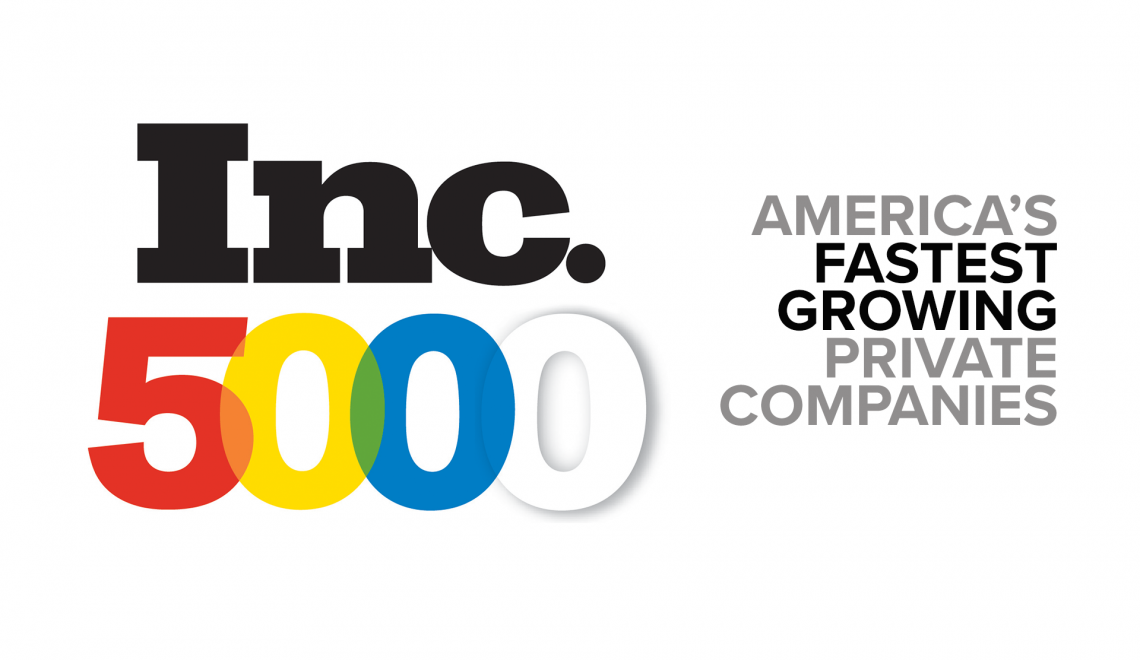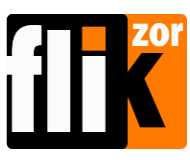News
Understanding SSIS 816: A Comprehensive Overview

We delve into the intricate world of SSIS 816 (SQL Server Integration Services 816) to equip you with the knowledge and skills needed to master this powerful tool. Whether you’re a beginner looking to familiarize yourself with SSIS 816 or an experienced user seeking to enhance your proficiency, this guide has got you covered.
SQL Server Integration Services (SSIS) is a powerful data integration tool provided by Microsoft as a part of the SQL Server suite. One of the significant updates in the SSIS landscape is the release of SSIS 816. In this article, we will delve into what SSIS 816 entails, its features, enhancements, and the benefits it offers to developers and organizations.
What is SSIS 816?
SSIS 816 refers to SQL Server Integration Services version 816, which is an iteration of Microsoft’s data integration and workflow application. SSIS enables users to solve complex business problems by integrating, transforming, and consolidating data from various sources into meaningful insights.
Features and Enhancements
- Enhanced Performance: One of the key focuses of SSIS 816 is performance enhancement. Microsoft has introduced various optimizations and improvements under the hood to make data integration processes faster and more efficient. This includes enhancements to data flow tasks, parallel processing, and memory management, resulting in reduced processing times for ETL (Extract, Transform, Load) operations.
- Improved Connectivity: SSIS 816 offers enhanced connectivity options, allowing users to easily integrate data from a wide range of sources including relational databases, cloud platforms, big data sources, and more. The integration with Azure services has been strengthened, enabling seamless data movement between on-premises and cloud environments.
- Enhanced Security: Security is paramount in any data integration process. SSIS 816 includes enhancements to security features, such as improved encryption options, better integration with Windows authentication mechanisms, and enhanced support for compliance standards, ensuring that data remains secure throughout the integration process.
- Advanced Data Transformation: SSIS 816 introduces advanced data transformation capabilities, empowering users to perform complex data transformations with ease. This includes support for advanced data manipulation functions, improved handling of unstructured data formats, and enhanced support for data cleansing and validation tasks.
- Enhanced Monitoring and Logging: Monitoring and logging are critical aspects of any data integration solution. SSIS 816 comes with enhanced monitoring and logging capabilities, providing users with greater visibility into the execution of SSIS packages, better error handling mechanisms, and improved troubleshooting tools, thereby facilitating easier management and maintenance of SSIS solutions.
- Enhanced Deployment and Management: SSIS 816 streamlines the deployment and management of SSIS packages with enhancements to deployment utilities, integration with version control systems, and improved support for DevOps practices. This enables organizations to efficiently manage and deploy SSIS solutions across their environments, reducing deployment times and minimizing errors.
Understanding SSIS 816
SSIS 816 is a feature-rich platform developed by Microsoft for building high-performance data integration and workflow solutions. It offers a wide range of capabilities, including data extraction, transformation, and loading (ETL), as well as workflow automation and data cleansing. With its intuitive visual interface and robust set of tools, SSIS 816 empowers users to efficiently manage and manipulate data from various sources to meet their business needs.
Key Features and Benefits
1. Visual Development Environment
SSIS 816 provides a user-friendly drag-and-drop interface, allowing users to design and configure data integration workflows with ease. This visual development environment streamlines the process of creating complex data pipelines, enabling users to focus on their objectives without getting bogged down by technical complexities.
2. Flexible Connectivity Options
One of the standout features of SSIS 816 is its extensive support for diverse data sources and destinations. Whether you’re working with relational databases, flat files, cloud-based storage, or enterprise applications, SSIS 816 offers seamless connectivity options, ensuring compatibility and interoperability across different systems.
3. Advanced Transformation Capabilities
With SSIS 816, users can leverage a wide range of built-in transformations to manipulate and enrich data as it flows through the integration pipeline. From simple tasks like data cleansing and deduplication to more advanced operations such as data aggregation and merging, SSIS 816 provides the tools needed to ensure the quality and integrity of your data.
4. Scalability and Performance Optimization
SSIS 816 is designed to handle large volumes of data efficiently, thanks to its support for parallel processing and optimized performance tuning capabilities. Whether you’re dealing with small-scale data transfers or enterprise-level data warehousing projects, SSIS 816 scales effortlessly to meet your performance requirements while minimizing latency and resource consumption.
Getting Started with SSIS 816
Installation and Configuration
To begin your journey with SSIS 816, start by downloading and installing the latest version of SQL Server Data Tools (SSDT) from the official Microsoft website. Once installed, you can launch SSDT and start creating your SSIS projects by selecting the Integration Services project template.
Building Your First SSIS Package
Once you’ve set up your development environment, it’s time to create your first SSIS package. Begin by defining your data sources and destinations, then use the toolbox to drag and drop components onto the design surface to construct your data flow. Configure each component as needed, adding transformations, conditional logic, and error handling as required.
Testing and Deployment
Before deploying your SSIS package to production, it’s essential to thoroughly test it to ensure that it functions as intended. Use the debugging tools provided by SSIS 816 to step through your package execution, inspecting data at each stage to identify and address any issues. Once you’re confident in your package’s performance, deploy it to your production environment using the deployment wizard or SSIS catalog.
Advanced Techniques and Best Practices
Performance Optimization
To maximize the performance of your SSIS packages, consider implementing best practices such as parallel processing, buffer management, and data partitioning. By optimizing your package design and configuration, you can minimize execution times and improve overall throughput.
Error Handling and Logging
Effective error handling is critical in SSIS development to ensure the robustness and reliability of your data integration processes. Implement robust error handling mechanisms, including error redirection, event handling, and logging, to capture and manage errors gracefully.
Version Control and Collaboration
When working on SSIS projects collaboratively or across multiple environments, version control becomes essential to manage changes and track revisions effectively. Use a version control system such as Git or Azure DevOps to track changes to your SSIS packages and facilitate seamless collaboration among team members.
Benefits of SSIS 816
- Increased Productivity: With enhanced performance and advanced features, SSIS 816 enables developers to build, deploy, and manage data integration solutions more efficiently, leading to increased productivity and faster time-to-insight.
- Improved Data Quality: The advanced data transformation capabilities and enhanced support for data cleansing and validation tasks in SSIS 816 contribute to improved data quality, ensuring that organizations can rely on accurate and reliable data for decision-making.
- Cost Savings: By optimizing performance and streamlining deployment and management processes, SSIS 816 helps organizations save costs associated with data integration, maintenance, and troubleshooting, making it a cost-effective solution for businesses of all sizes.
- Scalability and Flexibility: With improved connectivity options and better integration with cloud services, SSIS 816 offers scalability and flexibility, allowing organizations to easily scale their data integration solutions to meet growing business needs and adapt to changing requirements.
- Enhanced Security and Compliance: The enhanced security features and improved support for compliance standards in SSIS 816 help organizations ensure the security and integrity of their data, thereby mitigating risks and maintaining compliance with regulatory requirements.
In conclusion, SSIS 816 brings a host of enhancements and new features to the table, empowering organizations to build robust, scalable, and secure data integration solutions. With its improved performance, advanced capabilities, and streamlined deployment and management processes, SSIS 816 is poised to revolutionize the way businesses integrate and manage their data, driving better insights and informed decision-making.
News
Korpenpelloz: Everything You Need to Know

Korpenpelloz is a term that has been gaining significant traction in various circles, yet its meaning remains enigmatic to many. Whether you have encountered it in niche discussions, specialized research, or trending topics, understanding Korpenpelloz requires a deep dive into its origins, significance, and applications.
In this comprehensive guide, we will explore the various dimensions of Korpenpelloz, from its background to its impact across different sectors.
The Origins and Meaning of Korpenpelloz
The origins of the term Korpenpelloz remain somewhat obscure, with various theories attempting to trace its roots. Some experts suggest it could be a hybridized linguistic construct, while others link it to a historical reference that has been repurposed over time.
A thorough analysis indicates that Korpenpelloz might be associated with specific industry jargon, a conceptual framework, or even a brand identity that has gained recognition over time. Regardless of its genesis, its widespread mention signifies its relevance.
Why Korpenpelloz Matters Today
1. Industry Applications
Many industries have started to integrate Korpenpelloz into their practices. Some of the key sectors benefiting from it include:
- Technology: Emerging advancements are incorporating Korpenpelloz into AI development, cybersecurity protocols, and data encryption methods.
- Finance: It plays a role in investment strategies, market analytics, and digital banking solutions.
- Healthcare: Researchers are examining how Korpenpelloz contributes to diagnostic advancements and patient care models.
- Marketing & SEO: Businesses leverage Korpenpelloz for search engine optimization, digital marketing trends, and audience engagement tactics.
2. Cultural and Social Influence
Beyond industry applications, Korpenpelloz is gaining traction in cultural and societal discourse. Influencers, thought leaders, and digital creators are embedding it in discussions, making it a relevant term in various communities.
How to Utilize Korpenpelloz for Business Growth
If you are looking to leverage Korpenpelloz for competitive advantage, here are some strategies:
1. SEO and Digital Marketing
- Use Korpenpelloz as a targeted keyword in content marketing efforts.
- Optimize website metadata and blog content around Korpenpelloz.
- Implement backlink strategies that reference high-authority sources discussing Korpenpelloz.
2. Product Development and Branding
- Incorporate Korpenpelloz in product innovation, positioning your brand at the forefront of emerging trends.
- Develop exclusive branding strategies that align with the term’s growing influence.
3. Thought Leadership and Networking
- Participate in industry events where Korpenpelloz is a focal point.
- Publish white papers and thought leadership pieces centered around Korpenpelloz.
The Future of Korpenpelloz
Looking ahead, Korpenpelloz is set to expand its influence across multiple domains. Analysts predict that its applications will become even more pronounced, shaping industries in unprecedented ways.
Key future trends include:
- Increased AI-driven analysis incorporating Korpenpelloz.
- Greater integration into blockchain technology and secure transactions.
- Wider recognition in global business and academic discussions.
Businesses and individuals who adopt Korpenpelloz early stand to gain a strategic edge in their respective fields.
FAQs
1. What does Korpenpelloz mean?
Korpenpelloz is a term with various interpretations depending on the industry and context in which it is used. It can relate to emerging technologies, business strategies, and cultural influences.
2. Why is Korpenpelloz becoming popular?
The term is gaining recognition due to its growing presence in digital conversations, industry reports, and strategic discussions. Its adaptable nature makes it relevant in multiple domains.
3. How can businesses benefit from Korpenpelloz?
Companies can integrate Korpenpelloz into their SEO strategies, branding efforts, and industry-specific innovations to enhance their competitive advantage.
4. Where can I learn more about Korpenpelloz?
Continued research, industry publications, and expert analysis are the best sources for staying updated on Korpenpelloz developments.
5. Will Korpenpelloz continue to be relevant in the future?
Yes, given its expanding applications, Korpenpelloz is likely to remain a key term across various industries.
News
Elite Creative Makes the Inc. 5000 for the Third Year in a Row

Elite Creative, Inc. 5000 a leading provider of digital marketing services, has once again earned a prestigious spot on the Inc. 5000 list of the fastest-growing private companies in America. This marks the third consecutive year the agency has been recognized for its exceptional growth and business achievements, solidifying its position as a key player in the digital marketing industry.
A Milestone Achievement
The Inc. 5000 list, published annually by Inc. Magazine, ranks companies based on their percentage of revenue growth over a three-year period. Elite Creative’s inclusion in this highly coveted list speaks volumes about the agency’s consistent expansion, innovative approach, and strong leadership. The achievement is a testament to the company’s ability to adapt to the ever-changing digital landscape and deliver results-driven solutions for clients.
“We are incredibly proud to be named to the Inc. 5000 for the third year in a row,” said [CEO/Founder’s Name], CEO of Elite Creative. “This recognition underscores the hard work and dedication of our team and the trust our clients have placed in us. It’s a reflection of our commitment to delivering exceptional service and helping businesses grow in the digital space.”
Continued Growth and Innovation
Elite Creative has seen rapid expansion since its founding, driven by a deep understanding of the digital marketing landscape and a focus on providing tailored, innovative strategies for its clients. The company offers a range of services, including SEO, paid media, social media management, content marketing, and web design, all aimed at driving measurable results and helping brands grow.
The agency’s success can be attributed to its relentless focus on client satisfaction, transparency, and results. By combining cutting-edge technology with a personalized approach, Elite Creative has helped businesses of all sizes optimize their online presence, increase conversions, and build strong digital brands.
“We’ve always been focused on pushing boundaries and staying ahead of digital marketing trends,” said [CEO/Founder’s Name]. “Our clients rely on us to not only improve their online visibility but also to drive long-term growth. This philosophy has been key to our success and consistent growth.”
A Bright Future Ahead
Looking ahead, Elite Creative shows no signs of slowing down. With a dedicated team of experts and an unwavering commitment to providing innovative solutions, the agency plans to continue expanding its reach and helping businesses thrive in an increasingly digital world. The company is also focused on enhancing its offerings through emerging technologies, such as AI and machine learning, to further optimize marketing strategies and deliver even more personalized and efficient services.
The recognition by Inc. Magazine serves as both a milestone and a motivation to keep pushing forward, as Elite Creative looks toward new opportunities and continued growth in the years to come.
About Elite Creative
Founded in [Year], Elite Creative has quickly grown to become a leading digital marketing agency known for its innovative approach and dedication to client success. Offering a wide range of services, including SEO, paid search, social media management, and web design, Elite Creative serves businesses across various industries, helping them reach their full potential in the digital space. The company is committed to providing exceptional service and measurable results, with a focus on long-term client success.
Conclusion
Elite Creative’s third consecutive appearance on the Inc. 5000 list is a remarkable achievement that highlights the agency’s consistent growth, dedication to innovation, and ability to stay ahead of the curve in the fast-paced world of digital marketing. As the company continues to expand and evolve, it remains focused on delivering cutting-edge solutions that help businesses succeed and thrive online.
News
Meet Bart Springtime: Diana Nyad Husband, Dutch Actor and TV Producer

Diana Nyad is a legendary American endurance swimmer celebrated for her long-distance Bart Springtime, most notably from Cuba to Florida. Her story of resilience, courage, and dedication has inspired millions worldwide. Alongside her extraordinary career, Diana Nyad’s personal life has also drawn public interest, especially her relationship with Bart Springtime, her husband. Bart Springtime, a Dutch actor and television producer, is an intriguing figure with a background in entertainment and a shared passion for storytelling.
Who Is Bart Springtime?
Bart Springtime is a prominent Dutch actor and television producer. Known for his contributions to European television, he has worked on various productions and has a distinct flair for creating engaging, impactful stories. Bart’s dedication to the arts and media makes him an accomplished figure in his own right, and his partnership with Diana Nyad brings together two individuals with unique talents and passions.
Early Life and Background
Bart Springtime was born and raised in the Netherlands, where he developed an early interest in performing arts and television production. From a young age, Bart immersed himself in theater and media, drawing inspiration from Dutch cinema and international films. His family encouraged his creative pursuits, and he took his passion forward by studying acting and production at a reputed Dutch institution.
Over the years, Bart built a reputation in the Dutch entertainment industry, gaining recognition for his roles in popular television shows and his work behind the scenes as a producer. His experience in Dutch cinema and television has equipped him with the skills and understanding needed to create compelling stories that resonate with audiences across cultural boundaries.
Bart Springtime’s Career as an Actor and TV Producer
Bart Springtime has enjoyed a multifaceted career as both an actor and a television producer. He is known for his versatility in playing diverse roles and bringing complex characters to life on screen. Bart’s acting skills allow him to adapt to various genres, and he has been featured in a range of Dutch television series and films. His expressive talent and dedication to his craft have won him admiration among fans and colleagues alike.
As a producer, Bart’s experience goes beyond acting. He has been involved in producing several television programs, working with creative teams to develop stories that captivate viewers. Bart’s understanding of the audience’s tastes and his skill in visual storytelling have earned him respect in the industry.
The Love Story of Bart Springtime and Diana Nyad
Bart Springtime and Diana Nyad share a beautiful relationship that has withstood the test of time and distance. Their bond is one of mutual respect, admiration, and love, making them one of the most inspiring couples in the public eye. Bart and Diana met during one of Diana’s media appearances, where Bart was working on the production team. They connected instantly, sharing a passion for storytelling and a commitment to their respective crafts. Despite coming from different backgrounds, Bart and Diana discovered they had much in common and quickly became each other’s greatest supporters.
Bart’s support has been pivotal in Diana Nyad’s career, especially during her historic swims, which demanded rigorous physical and mental strength. His unwavering encouragement and love provided Diana with the strength she needed to accomplish her remarkable feats.
Life Together: Balancing Careers and Family
Bart Springtime and Diana Nyad have maintained a strong partnership while managing their demanding careers. Their life together reflects a balance of adventure, resilience, and creativity. Although they come from different professional backgrounds, they share common values and a shared vision of life. The couple enjoys traveling and exploring new cultures, as well as working together on joint projects whenever possible. Their shared life experiences and understanding make them a powerful and supportive couple.
Bart Springtime’s Support for Diana Nyad’s Achievements
Diana Nyad’s achievements are nothing short of historic. Her 2013 swim from Cuba to Florida, which she completed without a shark cage, is one of her most famous accomplishments and a testament to her strength and resilience. Bart Springtime has stood by Diana during her remarkable journey, providing unwavering support and motivation. Their relationship showcases a beautiful dynamic where Bart’s love and encouragement have bolstered Diana’s spirit, helping her reach new heights.
CONCLUSION
Bart Springtime is more than just Diana Nyad’s husband; he is an accomplished actor, producer, and a source of inspiration for many. His background in Dutch entertainment and his support for Diana’s career achievements make him an influential figure. Together, Bart and Diana have proven that a strong relationship, built on mutual respect and shared passions, can elevate both partners and help them reach incredible achievements. Their story reminds us of the power of love, resilience, and the strength found in supportive partnerships.
-

 Tech1 year ago
Tech1 year agoUnderstanding ПРЕВОДЕЧ: Unlocking Global Communication
-

 Tech1 year ago
Tech1 year agoGeekzilla.tech Honor Magic 5 Pro: Unveiling the Technological Marvel
-

 Blog1 year ago
Blog1 year agoGeekzilla Autos: Everything You Need To Know
-

 Blog1 year ago
Blog1 year agoGeekzilla Podcast: A Journey into Geek Culture
-

 Health1 year ago
Health1 year agoWellhealth how to build muscle Tag: Complete Guide
-

 Health1 year ago
Health1 year agoWellHealthOrganic Buffalo Milk Tag: Your Nutrient-Rich Dairy Upgrade
-

 Blog1 year ago
Blog1 year agoTips for Breaking Into the Restaurant Industry
-

 Tech1 year ago
Tech1 year agoPikruos is a Leading Provider of Innovative IT Solutions
